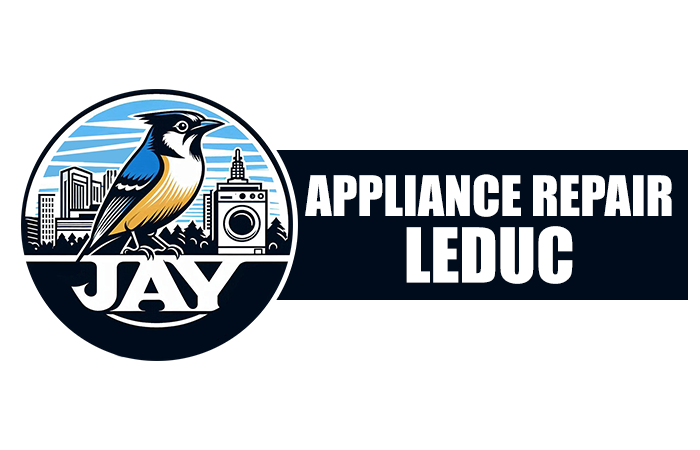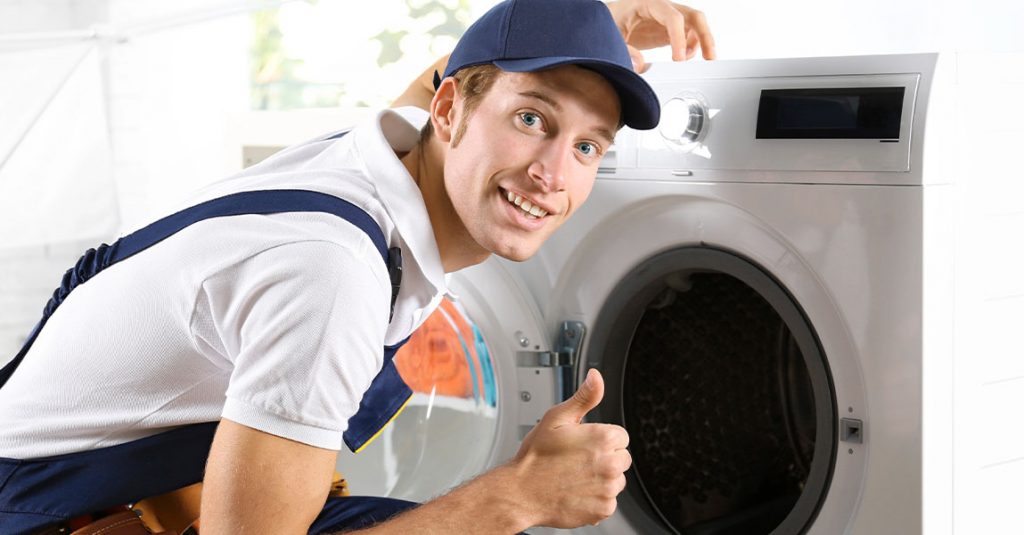Dryers are meant to make our lives easier, but when they overheat and shut down before finishing a load, it can feel frustrating. We want to explain why this happens, what it means for your machine, and how to deal with it in safe and practical ways. At JAY Appliances, we see this problem often, and there are a few clear reasons behind it.
Blocked Airflow Inside the Dryer
Airflow is critical for a dryer to work properly. Clothes dry because hot air moves around and moisture gets vented outside. When the airflow is blocked, heat builds up inside the drum. As a result, the machine overheats and automatically shuts off to protect its parts.
Lint buildup is the main cause. Even when we clean the lint screen, lint can sneak into the vent hose or settle inside the dryer walls. Over time, it blocks circulation. This is why we recommend cleaning the vent line at least once a year. Professional service might be needed if you notice slow drying and a burning smell. Regular checks prevent small clogs from becoming dangerous.
Failing Heating Element
Another common issue comes from the heating element. This part generates the hot air that dries the clothes. When it begins to fail, it might produce heat unevenly. In some cases, the element overheats because it cannot regulate itself anymore.
If the element runs too hot, the safety system steps in and shuts the dryer off mid-cycle. We can usually test this with a meter, but most homeowners cannot confirm it without proper tools. If your dryer runs fine on “air fluff” but fails on heated cycles, the heating element could be the culprit. Replacing it requires careful handling since it deals directly with high temperatures.
Thermostat and Thermal Fuse Problems
Every dryer has a thermostat and a fuse that act like watchdogs. They sense when the temperature gets too high and stop the cycle to keep things safe. If these parts are worn out, they may trigger shutdowns even when temperatures are normal.
Replacing a thermostat or thermal fuse is a straightforward repair, but it is important to diagnose correctly. A blown fuse often means there was another underlying issue like blocked vents. Our team advises against just swapping the part without addressing the cause. Otherwise, the new fuse may blow again within days.
Overloaded Drum and Heavy Fabrics
Sometimes the problem is not with the dryer itself but with how we use it. Overloading the drum or mixing heavy fabrics with lighter items creates uneven drying conditions. The motor works harder, airflow is restricted, and heat rises faster than the system can handle.
When this happens, the safety shut-off kicks in. The simple fix is to run smaller loads. Divide heavy items like towels or blankets into separate cycles. Not only does this reduce overheating, but it also helps clothes dry more evenly. A little load management goes a long way toward preventing stress on the dryer.
Motor Overheating and Mechanical Strain
The motor powers the drum, and when it struggles, heat builds inside the machine. Motors can overheat from wear, friction, or even dust accumulation. If your dryer makes unusual humming or grinding sounds before shutting down, the motor may be under strain.
Once overheated, the motor shuts off until it cools down. This is why some dryers restart after a long break. Motor replacement is more involved than other repairs, so catching early warning signs is valuable. Lubrication, cleaning, and proper load sizes can reduce stress on the motor and delay replacement.
Wiring and Electrical Issues
While less common, faulty wiring can also cause dryers to overheat and stop mid-cycle. Loose connections make the dryer pull more current than it should, which generates heat in the wrong places. Burn marks near the outlet or inside the control panel are red flags.
Electrical issues are not safe to handle without training. If you suspect wiring is the problem, it is best to stop using the machine until it is checked. Ignoring these symptoms can risk both the appliance and your safety. It is one of the reasons we emphasize early diagnosis and not waiting until the machine fails completely.
Preventive Maintenance Tips
We believe prevention is more effective than repairs after the fact. Cleaning lint screens after every load is the first step, but there is more to it. Inspecting the vent hose for kinks or blockages every few months helps maintain airflow. Vacuuming behind and under the dryer also clears hidden lint.
For deeper care, scheduling a professional check once a year ensures the heating element, thermostat, and motor are all working within safe limits. If you notice clothes taking longer to dry, that is your first warning sign to act. Our team provides appliance repair services in Leduc for households that need timely help before small issues escalate.
When Professional Dryer Repair is Necessary
Some dryer issues can be solved with simple cleaning or smaller loads. However, once parts like heating elements, thermostats, or motors begin failing, expert service is the safest option. Continuing to run a faulty dryer risks fire hazards or permanent damage.
If your dryer shuts off repeatedly mid-cycle, even after cleaning vents and adjusting loads, it is time to have it inspected. Skilled technicians can trace the problem with proper tools and replace the failing components correctly. This ensures the machine runs safely and lasts longer. You can find reliable dryer repair in Leduc when issues reach this stage.
What to Do While Waiting for Service
When waiting for a repair appointment, we suggest a few safe steps. Stop using the dryer if it smells like burning or if the shutdowns happen every time. Switch to smaller loads or air-dry clothes to reduce strain. Do not attempt to bypass safety fuses or sensors, since these are critical for preventing fires.
Another tip is to keep the area around the dryer free of dust, cardboard, or laundry piles. If overheating occurs, having clear space reduces the risk of heat damage to nearby items. These simple actions help keep your home safe until the machine can be serviced.
Common Misconceptions About Dryer Overheating
It is easy to assume that shutting off mid-cycle always means the dryer is broken beyond repair. In reality, most cases come from preventable issues like airflow blockage. Another misconception is that new dryers cannot overheat. Even brand-new machines will trip their safety systems if vents are blocked.
We also hear people say shutting off is just “the dryer cooling itself.” While that is partly true, the shutdown is still a sign something needs attention. Ignoring it can shorten the lifespan of the machine. Understanding these points helps us react in time and avoid unnecessary replacements.
Practical Energy Saving Benefits
Fixing overheating problems does more than keep the dryer running. It also saves energy. When airflow is blocked or parts are failing, dryers need longer cycles to dry the same load. That extra time means more electricity used and more wear on the machine.
By addressing the root issues, we cut down on wasted energy and reduce household costs. It is one of the hidden benefits of regular maintenance. A dryer that runs efficiently not only lasts longer but also has a lighter impact on monthly bills. For help with regular service, it is easy to contact us and schedule an inspection.
FAQs
Why does my dryer restart after cooling down?
The dryer restarts because the motor or thermal fuse cooled off. Safety switches reset once the temperature drops, but the cycle will likely fail again unless the cause is fixed.
Can lint inside the dryer really cause a fire?
Yes, lint is highly flammable. When airflow is blocked, the trapped heat and lint can ignite. This is why yearly vent cleaning is strongly recommended.
Is it safe to keep using a dryer that shuts off mid-cycle?
It is not safe. Each shutdown is a warning sign of overheating or part failure. Continued use can damage the dryer or pose safety risks.
How can I tell if my heating element is failing?
Clothes may take longer to dry, and you might notice the dryer shuts off only on heated cycles but not on air-only settings. A technician can confirm with testing tools.
Should I replace or repair an old dryer that overheats?
If the dryer is over ten years old and the repair cost is high, replacement may be worth considering. For newer models, a repair is often the more practical option.

